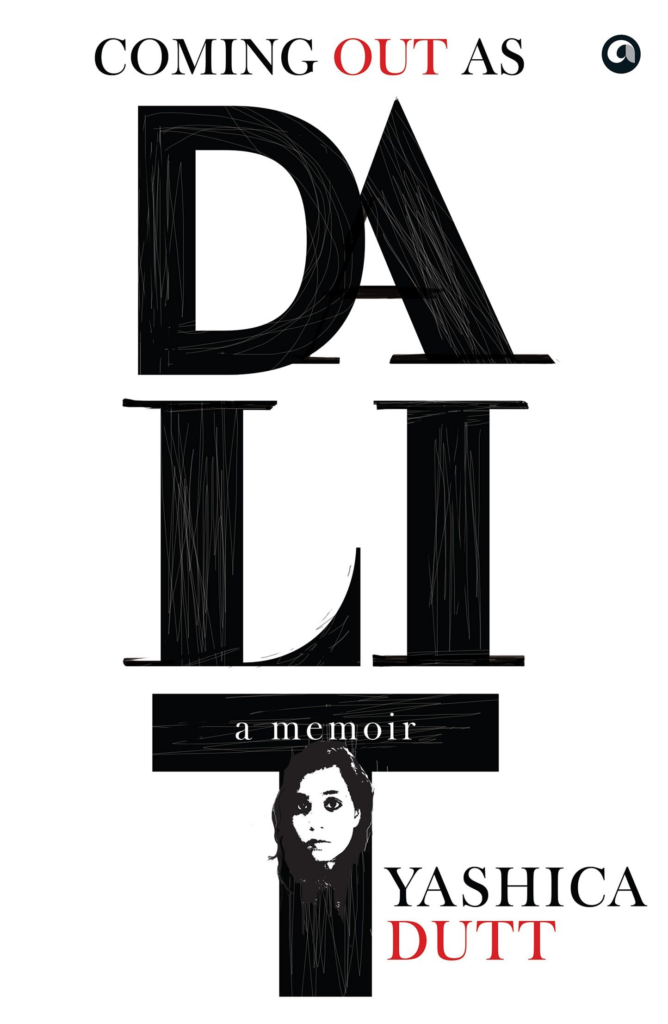
Yashica Dutt’s seminal work titled Coming Out as Dalit: A Memoir (published by Aleph Book Company in 2019) delves into the tale of a Dalit girl who had been in trauma over her caste identity. She did not disclose her caste identity – that she belongs to the Bhangi community – due to the fear of rejection from her upper-caste Hindu friends and colleagues for a long time. As Vjay Prashad reveals in his critical work Untouchable Freedom: A Social History of a Dalit Community, the Bhangis are the most backward people among Dalits, who indulge in cleaning human waste. This community is called by different names in different regions, i.e., Chuharas, Mehtars, Harijans, Balmikis, etc. [i]
Maya Suzuki argued that Balmikis have a high rate of migration to urban areas. They are employed in the sanitation sector of municipalities and the Ministry of Railways since colonial times.[ii] Dutt’s Dalitness was different from other Dalits, as she belonged to a bureaucratic family. But being elite Dalits, they were alienated from marginalized Dalits as well as upper castes. Her parents were eager to imitate the customs of the middle class and threw parties for Dutt’s birthday and other occasions, even though their financial situation did not permit them to do so.
Datt’s sense of alienation from both non-Dalits and the majority of Dalits (Chamar and Jatav, who received early recognition for their involvement in politics and bureaucracy) is tragic. The Bhangis, also known as Balmikis, were not very visible in Dalit movements. The group did not actively engage in the political activities of the Bahujan Samaj Party (BSP) or the Buddhist conversion campaign. Dutt was in trauma with her caste identity as well as from the fact that her father was an alcoholic. She saw domestic violence inside her home (p.5).
On January 19, 2016, Rohit Vemula, a Dalit youth pursuing a PhD at Hyderabad University, took his own life due to the university’s intolerable caste-based persecution and oppression. Datt was shaken after this tragedy and was forced to finally announce on Facebook that she is a Dalit.
However, Dutta ignores the complexities of her personality developed during by upbringing and inserted by her family. One must understand the deep anxieties which propelled the family to hide their caste identity to escape from the caste-based prejudices and discrimination and the impact on her early life. The trajectory of caste is fairly well known to those who are likely to be attracted to the book reviewed. There are more than a dozen books published on the issue of caste, some of which I had read earlier: Ashwini Deshpande’s The Grammar of Caste, M.N. Srinivas’ Caste: Its Twenty-First Century Avatar, Surinder S. Jodhka’s Caste and Oxford Handbook of Caste, and Suraj Yengde’s Caste Matters. These books focused on caste’s socio-economic and political perspective, but Dutt’s book provides unique insights from real lived experience. Therefore, the book is a required reading for scholars, researchers, and policymakers to understand the problem of Dalits within the epistemology, anthropology, and ontology of caste.
[i] Vijay Prashad, Untouchable Freedom: A Social History of a Dalit Community, New Delhi: Oxford University, 2000.
[ii] M. Suzuki, Socio-spatially Segregated Experience of Urban Dalits and their Anti-caste Imagination: A Study of the Balmiki Community in Delhi, India. CASTE A Global Journal on Social Exclusion, 4(2): 196-212, 2023.
***
Krishan Kumar is a political sociologist.
